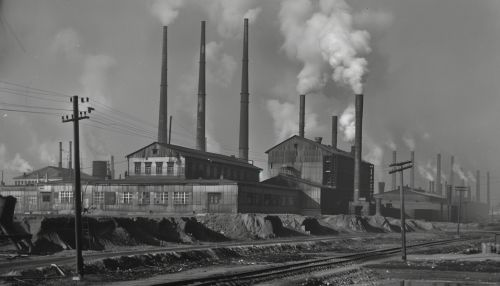Five-Year Plans
Introduction
The concept of Five-Year Plans is a central element in the economic planning and development strategies of various countries, particularly those with socialist or centrally planned economies. These plans are comprehensive, long-term strategies aimed at achieving specific economic, social, and political objectives within a five-year period. The most notable examples of Five-Year Plans are those implemented by the Soviet Union, but the concept has also been adopted by other nations such as China, India, and various Eastern European countries.
Historical Background
The origin of Five-Year Plans can be traced back to the Soviet Union under the leadership of Joseph Stalin. The first Soviet Five-Year Plan was introduced in 1928 and marked a significant shift from the New Economic Policy (NEP) to a more centralized and planned economy. The primary goal was to rapidly industrialize the Soviet Union and reduce its dependence on agriculture.
Soviet Union
The Soviet Five-Year Plans were a series of nationwide centralized economic plans. The first plan (1928-1932) focused on heavy industry and collectivization of agriculture. The subsequent plans continued to emphasize industrial growth, technological advancement, and military strength. Each plan was meticulously detailed, with specific targets for production, resource allocation, and labor deployment.


China
China adopted the concept of Five-Year Plans in 1953, following the establishment of the People's Republic of China in 1949. The Chinese Five-Year Plans have been instrumental in transforming China from an agrarian economy to a global industrial powerhouse. The plans have evolved over time, reflecting the changing priorities of the Chinese government, from heavy industry and infrastructure development to technological innovation and environmental sustainability.
Objectives and Goals
The primary objectives of Five-Year Plans typically include:
- Rapid industrialization
- Economic self-sufficiency
- Technological advancement
- Social welfare improvements
- Military strengthening
These objectives are often broken down into specific, measurable targets, such as production quotas for various industries, infrastructure projects, and social programs.
Implementation and Challenges
Implementing a Five-Year Plan involves a complex process of resource allocation, policy formulation, and administrative coordination. The success of these plans depends on various factors, including political stability, availability of resources, and the efficiency of the administrative machinery.
Resource Allocation
Resource allocation is a critical aspect of Five-Year Plans. It involves distributing financial, human, and material resources to different sectors of the economy. This process is often guided by the priorities set out in the plan, with a focus on sectors deemed crucial for achieving the overall objectives.
Policy Formulation
Policy formulation is another essential component. Governments typically develop a range of policies to support the implementation of the plan, including fiscal policies, trade policies, and labor regulations. These policies are designed to create a conducive environment for achieving the plan's targets.
Administrative Coordination
Effective administrative coordination is vital for the successful implementation of Five-Year Plans. This involves ensuring that various government departments and agencies work together seamlessly to achieve the plan's objectives. It also includes monitoring and evaluation mechanisms to track progress and make necessary adjustments.
Case Studies
Soviet Union
The Soviet Union's Five-Year Plans are among the most studied examples. The first plan (1928-1932) aimed at rapid industrialization and collectivization of agriculture. It led to significant industrial growth but also caused widespread disruption in the agricultural sector, leading to famine and social unrest. Subsequent plans continued to focus on industrial growth, with varying degrees of success.
China
China's Five-Year Plans have been pivotal in its economic transformation. The first plan (1953-1957) focused on heavy industry and infrastructure development. The Great Leap Forward, part of the second plan (1958-1962), aimed at rapidly transforming China into a socialist society but resulted in economic disaster and famine. More recent plans have focused on sustainable development, technological innovation, and improving living standards.
India
India adopted the concept of Five-Year Plans in 1951, shortly after gaining independence. The first plan focused on agriculture and irrigation to address food security. Subsequent plans have aimed at industrialization, infrastructure development, and poverty alleviation. India's planning process has evolved over time, with a greater emphasis on inclusive growth and sustainable development in recent plans.
Impact and Criticism
Five-Year Plans have had a profound impact on the economies and societies of the countries that have adopted them. They have been instrumental in achieving rapid industrialization, technological advancement, and social development. However, they have also faced criticism for their rigid and top-down approach, which can lead to inefficiencies, resource misallocation, and social disruption.
Positive Impact
- Rapid industrialization and economic growth
- Technological advancement and innovation
- Improved infrastructure and social services
- Enhanced military capabilities
Criticism
- Rigid and bureaucratic approach
- Inefficiencies and resource misallocation
- Social disruption and human suffering
- Environmental degradation
Conclusion
Five-Year Plans have been a central element in the economic planning and development strategies of various countries. While they have been successful in achieving rapid industrialization and economic growth, they have also faced significant challenges and criticisms. The effectiveness of these plans depends on various factors, including political stability, resource availability, and administrative efficiency.
